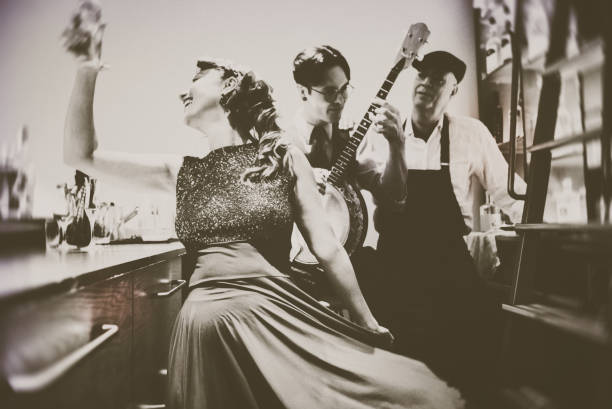
Picture a summer night in the 1950s. The car is clean, the radio is warm and the drive-in marquee glows at the edge of town. Families pass picnic baskets, teens compare milkshakes and the whole place buzzes with a feeling that is bigger than the film. The magic is not just on the screen. It is in the ritual, the shared anticipation and the easy rhythm of spending time together.
From drive-in theaters to Australian casinos online, the ways we play may have changed, but the joy of shared fun remains the same. If you look past the technology, today’s most loved digital hobbies borrow a surprising amount from mid century habits that never went out of style.
The 1950s Playbook of Togetherness
Mid century fun was built on three simple ingredients, all of which still work.
- A clear plan for the night
The movie starts at eight, the jukebox spins after and everyone knows where to meet. Modern versions are calendar prompts, daily challenges and event timers that turn a loose plan into a shared moment. - Light rules with lots of room to chat
Bowling frames, card hands and soda breaks kept conversation alive. Today’s quick session games and snackable entertainment do the same. Rounds are short, rules are simple and there is always time to laugh between turns. - Visible progress
Scoreboards at the alley or a stamp on a loyalty card made effort feel real. Digital platforms use badges, milestones and small collections to spark that same little burst of pride.
What looked casual was actually thoughtful. The night flowed because the structure was friendly, the stakes felt right and the feedback was instant.
Small Rituals, Big Memories
The golden age of roadside diners and teen clubs taught a lesson about habit building. Keep the ritual small, repeat it often and let people add their own flavor. That is why the weekly drive-in date, Friday bowling or a card game at the kitchen table stuck for decades.
You can still see those patterns today:
- The quick meet-up
Fifteen minutes with friends after work or before a show keeps relationships alive without requiring a full evening. - The personal best
A tidy high score, a checklist item or a small collection keeps you coming back because you can see change. - The theme night
Themed playlists and seasonal menus in the 1950s mirror modern seasonal events that refresh the vibe without rewriting the whole experience.
Nostalgia is not just about old songs and chrome trim. It is about repeatable joys that fit neatly into ordinary days.
Design Choices That Never Age
Good experiences in any era share the same quiet disciplines. The 1950s had clear signage and friendly attendants. Today we have clean menus, quick tutorials and layouts that make sense on small screens. The goal is identical, help people start fast and enjoy the moment.
Three timeless design choices still set the tone:
- Frictionless first minutes
In the 1950s you parked, paid and watched the cartoon short. Now you tap, learn by doing and hit the core action in seconds. - Short complete arcs
A bowling frame or a pop song ends with a tiny cheer. Modern sessions wrap quickly, which respects time and keeps the mood light. - Clear, friendly information
Yesterday’s marquee and menu boards have become readable typography and plain language panels. Clarity makes leisure feel welcoming.
When these basics show up, the rest feels easy. People relax, share the moment and remember why they came.
What the 1950s Can Teach Today’s Digital Fans
If you want more delight and less noise in your downtime, mid century habits are a great guide.
- Pick a simple theme for the night
Comedy clips, a cozy puzzle or a classic soundtrack. A small theme keeps choices from getting overwhelming. - Use a tidy time box
Give yourself one record’s worth of time, about twenty minutes, so sessions stay fresh. - Celebrate tiny wins
Keep a note on the fridge with personal bests, favorite tracks or in-jokes from the week. Small trophies make memories stick. - Mix analog and digital
Pair a short on-screen session with a stroll, a milkshake or a board game. The blend is what people remember. - Invite one more person
A sibling, a neighbor or a friend adds that 1950s sense of community without turning the night into a production.
These moves turn quick play into a ritual that feels purposeful instead of passive.
The Heart of Fun Hasn’t Moved
The cars look different and the screens got smaller, but the feeling we chase is unchanged. We want a little anticipation, a dash of skill or chance and an easy way to share a grin with someone sitting beside us. The 1950s perfected that recipe with jukeboxes, lanes and open air cinemas. Today’s platforms echo it with instant starts, tidy feedback and sessions that end on a high note.
If you have ever smiled at an old photo of a neon sign or a row of chrome stools, you already know the secret. Fun that fits real life always wins. Keep it simple, keep it social and keep it short enough to leave you wanting one more round. That is the thread that runs from the drive-in to the living room today and it is why the best parts of mid century leisure feel right at home in the digital world.
